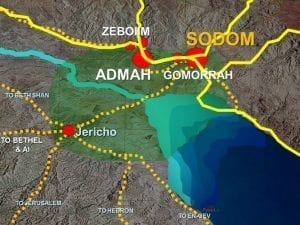Introduction
This biblical city along with Gomorrah and the other cities of the plain were destroyed because of their gross homosexuality according to Genesis chapter 19. However, many say that the whole event is simply a myth; a fabricated story to make a moral point. Typical of this view is given by the late journalist, writer and broadcaster Magnus Magnuson who had this to say:
Despite strenuous efforts by archaeologists and romantics alike, no trace has ever been found of the biblical cities of the Vale of Siddim, either in the ground or under the waters of the Dead Sea. Sodom and Gomorrah and Lot’s wife in her pillar of salt remain forever petrified in the realm of legend.[1]
In their book on the history of Israel and Judah, Miller and Hayes state:
The Sodom and Gomorrah story reflects yet another motif pattern from extra biblical literature, that of Divine beings who visit a city to test the hospitality of its people and eventually destroy the inhospitable city. One can compare in this regard the Greek myth of Baucis and Philemon. The presence of such traditional motifs in the biblical narratives raises the possibility that of least some of these narratives are purely products of the storyteller’s art, which of course raises serious questions about their usefulness for historical reconstruction.[2]
It is important to remember that the great biblical cities of Nineveh and Babylon were declared to have been fictitious until they were discovered. King David was regarded as being an invention of the Jews until an inscription on a stone mentioned the House of David. King Nebuchadnezzar was regarded as a mythical king of Bible legend until some bricks were found with his name clearly written on one of them. In the mid-nineteenth century the Book of Daniel was regarded as fiction and especially chapter five regarding king Belshazzar. A leading scholar of the time, Dean Farrar (1831-1903) declared that; there was no king Belshazzar. A German critic, Ferdinand Hitzig, said in 1850, Belshazzar was obviously a figment of the author’s imagination. Then someone bothered to decipher a clay cylinder held in the British Museum and Belshazzar’s name was clearly written on the cylinder.[3]
Biblical citations of Sodom
The reference to the destruction of Sodom and Gomorrah by so many Bible authors points to the fact that ancient cataclysm was universally believed and well attested. See: Genesis 10:19, 13, 14, 18, 19; Deuteronomy 29:23, 32:32; Isaiah 1:9-10, 3:9,13:19; Jeremiah 23:14, 49:18, 50:40; Lamentations 4:6; Ezekiel 16:46-56; Amos 4:11; Zephaniah 2:9; Matthew 10:15-11:24; Mark 6:11; Luke 10:12, 17:29; 2 Peter 2:6; Jude 7; Revelation 11:8.;
The Ebla Tablets
Archaeologists knew from their study of Sumerian, Akkadian and Egyptian texts that there had been once an ancient Assyrian empire called Ebla. In 1964 Paolo Matthiae and his team uncovered the remains of a city under what was known as Tell Mardikh some 30 km south of Aleppo in northern Syria. The tell was identified during their excavation of 1968, when they unearthed a male statue containing a 26-line inscription with the words; dedicated to Ibbit -Lim, son of Ikris-Hepa, King of Ebla.
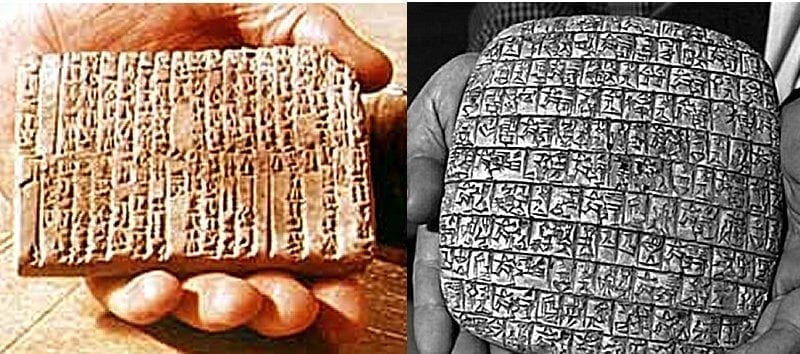 Over the next few years, they unearthed almost 2,000 clay tablets. Professor Giovanni Pettinato also from Rome University, a specialist in Sumerian and the Akkadian and the languages of Mesopotamia which are were all written in cuneiform text, was the epigrapher who deciphered/translated the tablets. Decipherment of some of the texts showed Ebla to have been a flourishing empire with a population of 260,000 people some 4,500 years ago (2,500 BC).
Over the next few years, they unearthed almost 2,000 clay tablets. Professor Giovanni Pettinato also from Rome University, a specialist in Sumerian and the Akkadian and the languages of Mesopotamia which are were all written in cuneiform text, was the epigrapher who deciphered/translated the tablets. Decipherment of some of the texts showed Ebla to have been a flourishing empire with a population of 260,000 people some 4,500 years ago (2,500 BC).
Ebla was the centre of a great trading empire, with trade relations stretching right across the Fertile Crescent, with the possible exception of Egypt. One of the interesting illustrations of this comes from the list of rations given to messengers as they traversed certain routes, with the names of cities given. The biblical towns of Ashdod and Sidon are mentioned along with Hazor, Lachish, Megiddo, Gaza, Dor, Sinai, Ashtaroth and Joppa as well as Sodom and Gomorrah, but not just them, the whole five Cities of the Plain; Sodom, Gomorrah, Admah, Zeboiim, and Zoar (also called Bela) are part of the list.[4]
Where was Sodom?
The well respected and influential scholars W F Albright and G E Wright advanced the idea that the two cities of Sodom and Gomorrah as well as the smaller Zoar were located south of the Dead Sea and possibly even under it. This position was believed to the extent that in 2011, a Russian submarine spent considerable time in an unsuccessful attempt to find evidence of the cities under its waters.[5] Possibly the main reason why archaeologists have been looking to the south of the Dead Sea is because Genesis chapter 14 tells of the battle between the four kings of the north and the five kings of the plain taking place in the Valley of Siddim and that the land was full of tar pits. All of which is consistent with the area south of the Dead Sea.
Dr Bryant Wood, presented evidence for the Discovery of the Sin Cities of Sodom and Gomorrah when excavating tall Bab edh-Dhra and Numeira in the South east of the Dead Sea, including finding a layer of ash which is consistent with the cities being destroyed by fire.[6] However, this position must be wrong.
The Bible tells us about the separation of Abram[7] and Lot: From the Negev he (Abram) went from place to place until he came to Bethel, to the place between Bethel and Ai.[8]…. Lot looked up and saw that the whole plain of the Jordan was well watered like the garden of the LORD like the land of 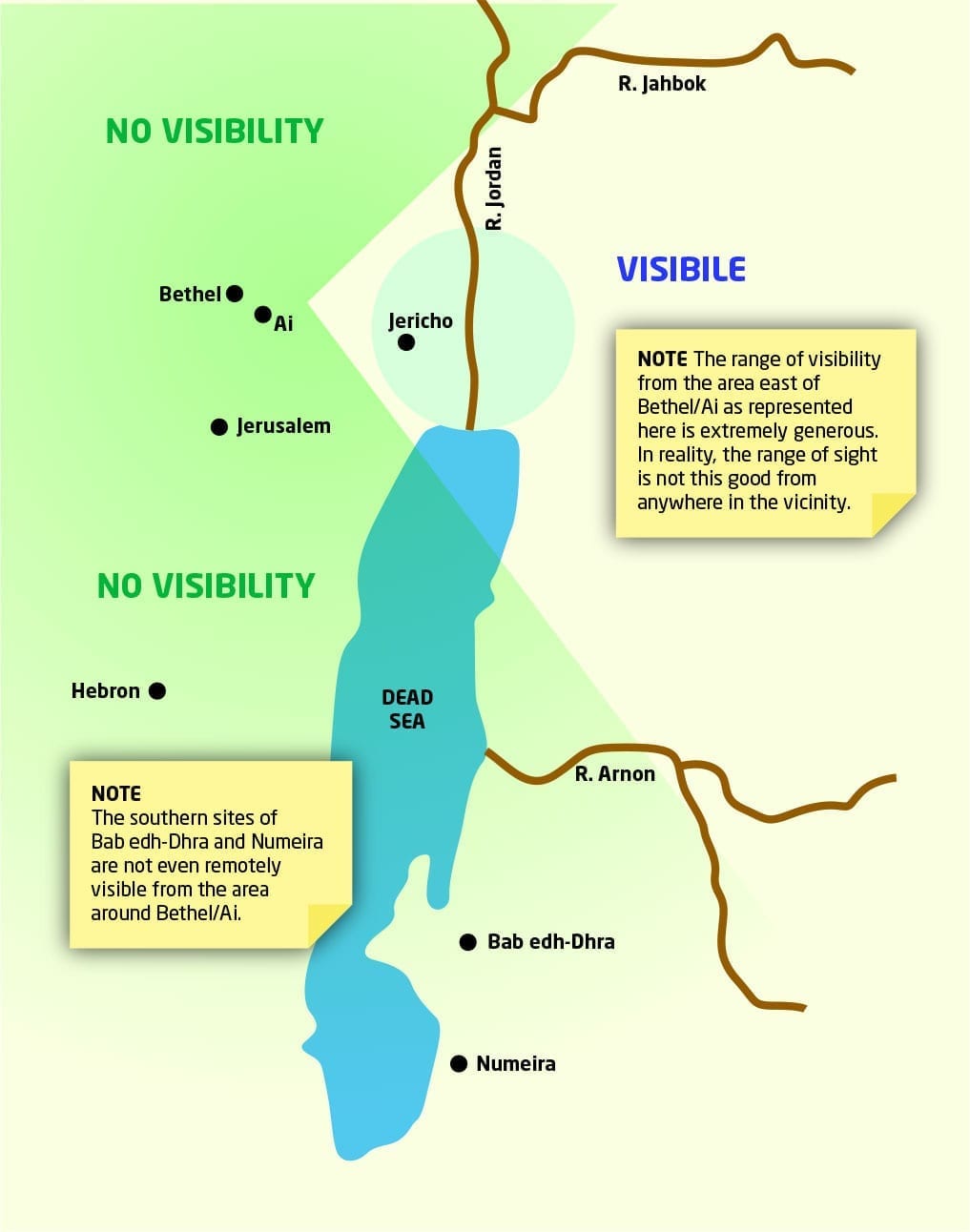 Egypt towards Zoar. So Lot chose for himself the whole plain of the Jordan and set out toward the east. Abram lived in the land of Canaan, while Lot lived among the cities of the plain.[9]
Egypt towards Zoar. So Lot chose for himself the whole plain of the Jordan and set out toward the east. Abram lived in the land of Canaan, while Lot lived among the cities of the plain.[9]
It is only possible to see the north end of the Dead sea and impossible to see its south end from a position of between Bethel and Ai as shown in the accompanying map.[10] Also, the plain of the Jordan can only be north of the Dead Sea because the Jordan does not flow out of it. The area where the Jordan flows into the Dead Sea, shown light blue on the map, is well watered due to the Jordan’s annual flooding and the natural springs that provide abundant water for the area. Lot set out toward the east, which would take him to the north of the Dead Sea in the light blue area of our map. The land of Canaan extended to the river Jordan. Verse 12 contrasts where Abram lived with where Lot lived thereby implying that they lived on opposite sides of the Jordan.
The Bible states[11] that: Abraham looked down towards Sodom and Gomorrah, toward all the land of the plain, and he saw dense smoke rising from the land, like smoke from a furnace. Even though 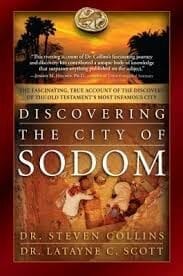 Abraham had gone back to Hebron, he still would have been able to see the smoke rising from the destruction of the cities.[12]
Abraham had gone back to Hebron, he still would have been able to see the smoke rising from the destruction of the cities.[12]
Dr Steve Collins states in his book, pictured, and much of this article is taken from his book,[13] that the Hebrew word translated as “plain” is “kikkar” and it can have many meanings. It can mean a circular flat bread, or a disc like piece of metal such as a coin or metal ring, or a spreading circular area of land. The area being discussed does appear flat and circular.
Tall el-Hammam
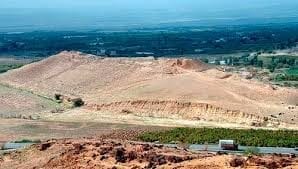 There is a very large tell[14] in exactly this area and it fits what the Bible says about Sodom. From its top are captivating views of the surrounding country. It is by far the largest tell in the whole area both north and south of the Dead Sea being approximately 40 hectares (100 acres), see image. Steven Collins has led a team in the excavation of this tell for thirteen years and he is convinced that this is the remains of Sodom for the following reasons:
There is a very large tell[14] in exactly this area and it fits what the Bible says about Sodom. From its top are captivating views of the surrounding country. It is by far the largest tell in the whole area both north and south of the Dead Sea being approximately 40 hectares (100 acres), see image. Steven Collins has led a team in the excavation of this tell for thirteen years and he is convinced that this is the remains of Sodom for the following reasons:
- The Bible implies that Sodom was the largest of the cities of the plain. It is always mentioned first when other cities are cited. It is the only one of the cities mentioned by itself.
- It is located on the major east- west trade route and the Ebla Tablets confirms this location for Sodom.
- It was enclosed by a very large and for the time, impenetrable wall.
- We are told that Lot sat in the gate. Diggings have revealed an extremely large and impressive gate.
- The patriarchs lived in a period which is described in archaeological terms as being the Middle Bronze age (2,000 – 1,540 BC). Sodom was dated as being Middle Bronze (MB).
- Sodom was violently destroyed during Abraham’s life time. Tall el-Hammam was totally obliterated during the Middle Bronze age 2 (MB2, 1,800-1540 BC). This was achieved by the dating of its pottery, the city’s fortifications, ramparts and walls on both the upper and lower talls.[15] And carbon 14.[16]
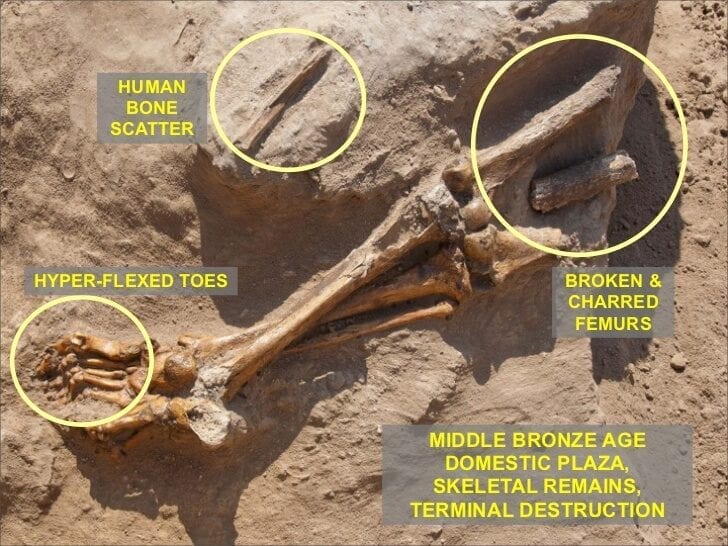 Excavations at Tall el-Hammam revealed a layer of ash from half a metre to two metres thick over both the upper and lower talls, which terminated the MB city. Embedded in the ash layer are broken and tumbled mud bricks, smashed and charred pottery vessels and other day-to-day objects and human bones—all violently churned into a tell-tale ashy matrix.[17] The photo is of human remains discovered in the destruction layer. The other photo shows the layer of ash between the MB2 layer and the much later (500 to 700 years later) Iron age layer. Both photos are courtesy of Tall en-Hammam excavation project.
Excavations at Tall el-Hammam revealed a layer of ash from half a metre to two metres thick over both the upper and lower talls, which terminated the MB city. Embedded in the ash layer are broken and tumbled mud bricks, smashed and charred pottery vessels and other day-to-day objects and human bones—all violently churned into a tell-tale ashy matrix.[17] The photo is of human remains discovered in the destruction layer. The other photo shows the layer of ash between the MB2 layer and the much later (500 to 700 years later) Iron age layer. Both photos are courtesy of Tall en-Hammam excavation project.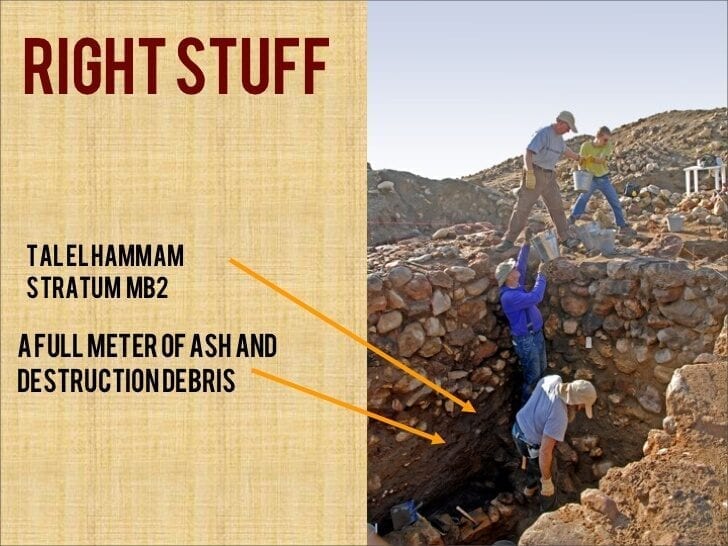 Normally there is a progression of layers representing the various civilizations that inhabited the city. However, in the case of Tall el-Hammam there is a gap of about 500 to 700 years before the tell had been re-settled.[18] This is extremely rare and especially for a city so ideally situated and it is consistent with the total annihilation of the area. Confirmation of the total destruction of this once “well-watered” area comes from it being described as a wasteland twice, when Moses passed through it several hundred years later.[19]
Normally there is a progression of layers representing the various civilizations that inhabited the city. However, in the case of Tall el-Hammam there is a gap of about 500 to 700 years before the tell had been re-settled.[18] This is extremely rare and especially for a city so ideally situated and it is consistent with the total annihilation of the area. Confirmation of the total destruction of this once “well-watered” area comes from it being described as a wasteland twice, when Moses passed through it several hundred years later.[19]
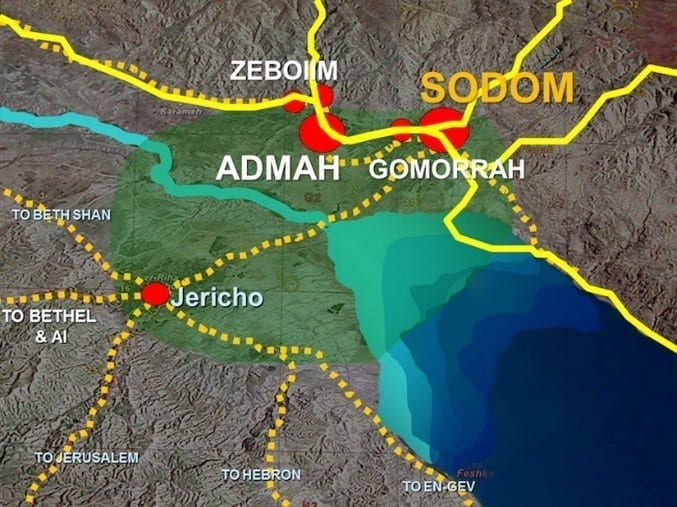 Collins has associated other tells in the area with the cities of the plain as shown in the accompanying map. Image courtesy of Tall en-Hammam excavation project. Excavation has shown that they suffered a similar fate to Sodom.
Collins has associated other tells in the area with the cities of the plain as shown in the accompanying map. Image courtesy of Tall en-Hammam excavation project. Excavation has shown that they suffered a similar fate to Sodom.
Joseph Holden who has excavated on Tall en-Hammam, concludes in his book[20]: Many existing biblical sites have been confirmed based on less geographical evidence than that of Tall en-Hammam. Indeed, after reviewing the still increasing archaeological, biblical and geographical evidence, if one denies that Tall en-Hammam is the biblical city of Sodom, every biblical city that has been confirmed on less epigraphical evidence must be called into question.
The cause of the destruction of Tall en-Hammam
Scripture tells us: Then the Lord rained upon Sodom and upon Gomorrah brimstone and fire from the Lord out of heaven; And he overthrew those cities, and all the plain, and all the inhabitants of the cities, and that which grew upon the ground.[21]
During one of the digs, an unusual piece of ceramic was found. It was easily identified as a part of a MB2 large storage jar called pithoi, but on one surface, it was glazed to a glass-like finish. Glazing requires temperatures in excess of 1,200 degrees C, a temperature impossible to reach by any furnace at the time. The piece was identified as trinitite. The name comes from the glazing of sand found at the site where the first atomic bombs were tested, called Trinity Site. The piece of pottery, 120 mm long, was only thinly glazed and the underneath part was untouched indicating that the enormous heat required was only brief; just like a nuclear explosion. Note, the nuclear bombs were detonated above the intended site not at ground level. As the dig progressed, other pieces of trinitite were found.[22]
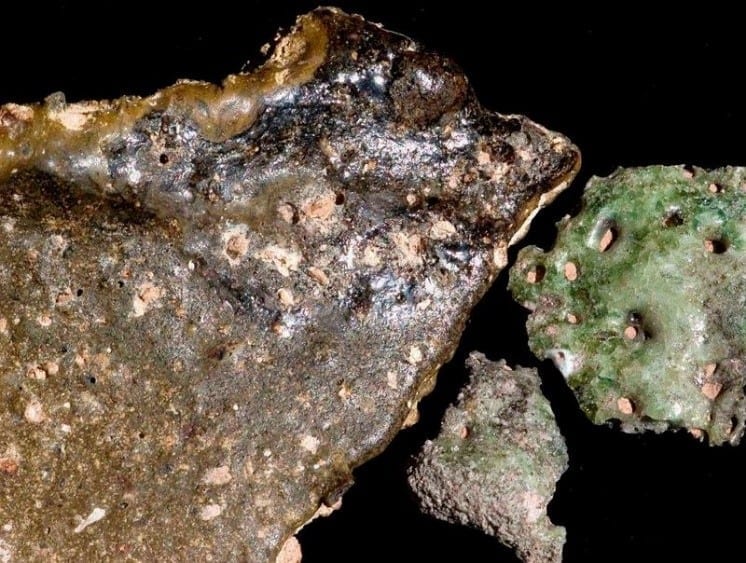 After extensive analysis at the US Geological Survey Laboratory in New Mexico, the piece of pottery was confirmed to be identical with samples produced by atomic explosions.
After extensive analysis at the US Geological Survey Laboratory in New Mexico, the piece of pottery was confirmed to be identical with samples produced by atomic explosions.
On the left of the photograph, is an MB2 pottery sherd (120 mm long) from Tall el-Hammam, the surface of which is melted into glass with both calcium and carbon separation which is typical of trinitite. Two smaller pieces of trinitite are on the right.
Since there are no impact craters in the whole area, the effect could only have been produced by the explosion of a meteor or some other mid-air event producing heat so intense and fleeting that it could melt just the surfaces of pottery sherds exposed to it. The heat and sheer force would have been horrific, destroying buildings, pulverising mud brick structures and evaporating all life.[23]
A meteor explosion occurred high above Tunguska, Siberia in 1908. This destroyed an entire forest over an area of one thousand square miles, leaving 80 million trees incinerated and flattened like spiked tooth picks.
Recent investigations[24]
Further research has been carried out by the Tall el-Hammam Excavation Project (TeHEP) which involves scientists from New Mexico Tech, Northern Arizona University, North Carolina State University, Elizabeth City (NC) State University, DePaul University, Trinity Southwest University and 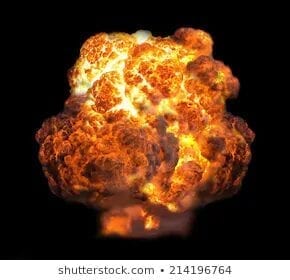 Los Alamos National University. A scenario that fits their results is for a meteor[25] to have exploded about one kilometre above the northeast corner of the dead sea reigning down a fireball of between 4,000 to 12,000 degrees C.[26] Such an event would have obliterated all life, the mud brick walls in the area would have disappeared leaving only stone foundations, the area would have been stripped of its topsoil and Dead Sea salt would have been spread over the area rendering it infertile. This would explain why the area was unoccupied for hundreds of years. The scientists estimated that 40,000-60,000 people living in the area were killed and the whole area of the kikkar rendered uninhabitable.
Los Alamos National University. A scenario that fits their results is for a meteor[25] to have exploded about one kilometre above the northeast corner of the dead sea reigning down a fireball of between 4,000 to 12,000 degrees C.[26] Such an event would have obliterated all life, the mud brick walls in the area would have disappeared leaving only stone foundations, the area would have been stripped of its topsoil and Dead Sea salt would have been spread over the area rendering it infertile. This would explain why the area was unoccupied for hundreds of years. The scientists estimated that 40,000-60,000 people living in the area were killed and the whole area of the kikkar rendered uninhabitable.
All this is consistent with scripture. Genesis 19:25 states: Thus he overthrew those cities and the entire plain, including all those living in the cities—and also the vegetation in the land.
Jude compares that the destruction of Sodom and Gomorrah with the fires of hell: In a similar way, Sodom and Gomorrah and the surrounding towns gave themselves up to sexual immorality and perversion. They serve as an example of those who suffer the punishment of eternal fire.[27]
Conclusion
Why has there been such a desire to label the Bible account of the destruction of Sodom, Gomorrah and the other cities of the plain, a myth? Could it be that people do not like to think that there is an all-powerful God who will judge sin and particularly the sin of homosexuality which God calls an abomination, a detestable act.[28] Homosexuality is condemned in both the Old Testament[29] and the New Testament.[30] It is a perversion of God’s design for the pinnacle of His creation which He established from the beginning; For this reason a man will leave his father and mother and be united with his wife and the two will become one flesh.[31] Also; God blessed them and said to them, “Be fruitful and increase in number; fill the earth and subdue it.”[32] This last command cannot be fulfilled by homosexuals.
Another reason why homosexuality is a particularly obnoxious sin to God, is that marriage between a man and a woman is the forerunner to the marriage between Christ and His bride, the church, after believers have been raptured, as described in Revelation 19:7-9.[33] Marriage between a man and a woman is integral to, and underpins the whole fabric of the Bible. The Bible starts with marriage and it finishes with marriage. No wonder God calls any deviation from it, an abomination.
Again, archaeology has confirmed the veracity of the Bible even in an area where it has been attacked so vigorously.
[1] Magnusson, Archaeology of the Bible, page 41.
[2] J M Miller and J H Hayes, A History of Ancient Israel and Judah, Philadelphia, 1986, page 60.
[3] Paul Billington, The Bible Magazine, Vol. 26, No 3, pages 22-27.
[4] I have a blog article on the Ebla Tablets, go to; adefenceofthebible.com/2019/06/28/ebla-tablets.
[5] Dr Steven Collins and Dr Latayne C Scott, Discovering the city of Sodom, Howard Books, 2013, pages 100-101.
[6] Bryant G Wood, Bible and Spade, 1999, pages 68-69.
[7] Later, God changed Abram’s name to Abraham (Genesis 17:5).
[8] Genesis 13:3.
[9] Genesis 13:10-12.
[10] This map is an adaption of one taken from Collins and Scott see reference 5 page 262.
[11] Genesis 19:28.
[12] Dr Steven Collins and Dr Latayne C Scott, Discovering the city of Sodom, Howard Books, 2013, page 121.
[13] Ibid page 40
[14] Tell/tel/tall/tal all have the same meaning which is a mound of a ruined city.
[15] Collins and Latayne pages 157 and 178.
[16] Brian Nixon, Assist News Service, August 21, 2018: https://www.lifesitenews.com/news/archeologists-sodom-and-gomorrah-literally-destroyed-by-fire-and-brimstone.
[17] Ibid page 156.
[18] Ibid, page 157.
[19] Numbers 21:20; Numbers 23:28.
[20] Joseph M Holden and Norman Geisler, The Popular Handbook of Archaeology and the Bible, Harvest House Publishers, 2013, page 219.
[21] Genesis 19:24-25 KJV.
[22] Ibid, pages 200-215.
[23] As above.
[24] The preliminary findings presented in November 2018, to the American Schools of Oriental Research and reported in lifestylenews: https://www.lifesitenews.com/news/archeologists-sodom-and-gomorrah-literally-destroyed-by-fire-and-brimstone.
[25] Above average levels of platinum have been found in the area and meteors contain high platinum levels.
[26] Results of analysis showed that Zircon crystals were formed and they require heat in this temperature range.
[27] Jude 7.
[28] Leviticus 20:13.
[29] Genesis 18:16-19:29, Leviticus 18:22, Leviticus 20:13.
[30] Romans 1:26-32, 1 Corinthians 6:9-11, 1 Timothy 1:9-11, Jude 7.
[31] Genesis 2:24.
[32] Genesis 1:28.
[33] A good explanation of this future event can be found at: https://www.bible.com/events/112809.
